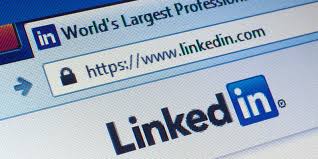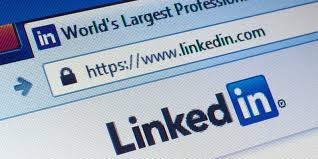
From a brainwave in a tech entrepreneur’s living room to a $26.2 billion takeover target, LinkedIn’s journey took only 14 years to attain the stage where it is now.
The idea for LinkedIn was hatched from the apartment of Reid Hoffman, 48, in December 2002. This was a short time after the online payment service PayPal, where Hoffman was the CEO, was bought over by eBay.
In the late 1990s, Hoffman had been an early pioneer of social networks after launching SocialNet before he joined PayPal as its main troubleshooter. Hoffman’s successor idea – LinkedIn – brought professionals face to face in the online marketplace in stark contrast to SocialNet that allowed people to meet each other online using pseudonyms.
LinkedIn which went live in 2003 was launched with help from former SocialNet colleagues and was aimed to let people build a professional online network. LinkedIn lets people establish business contacts by posting a professional profile. The company earns revenue by charging premium subscriptions to recruiters and businesses while most users do not pay for the service.
Hoffman believed people would want a separate site to manage their professional lives and persevered with LinkedIn even though he was an early investor in Facebook in 2005.
Before becoming chairman, he was LinkedIn’s chief executive for four years. the chief executive is Jeff Weiner, a former Yahoo executive.
Starting in 2003 when Sequoia Capital took a stake, LinkedIn attracted capital from venture capital investors. Pegging the value of LinkedIn at about $1bn in 2008, Sequoia and other firms bought 5% for $53 million.
As the popularity of online networks increased in the noughties, LinkedIn saw rapid growth. Valued at $4.3bn, the company was floated on the New York stock exchange in 2011. The hope of future returns from the trove of users and professional data that LinkedIn had amassed had driven investors to overlook its regular losses.
As investors, hungry for the latest tech and digital media success story, appeared to banish all memory of the 2000 dotcom crash, the LinkedIn shares more than doubled on the first day of trading.
LinkedIn has reached a number of more than 433 million users in 200 countries now and has continued to attract members and grown from about 100 million when it was floated. LinkedIn has bought companies and hired staff outside of the US where it has expanded rapidly. LinkedIn is based in the Mountain View, California, next to Google’s base.
Last year the company recorded a net loss of $166 million even though the revenues of the company touched $3 billion. The “talent solutions” division of the company, which charges recruiters to advertise jobs and use the company’s data, is the source of most of its revenues.
However LinkedIn’s growth has not been without the hick ups. In February, after its revenue forecast fell well short of expectations, $11 billion of its market value were wiped off in a single day as the shares of the company plunged by more than 40 %. The fall was the shares’ worst day since the flotation.
After LinkedIn said online ad revenue growth slowed to 20% in the fourth quarter of 2015 from 56% a year earlier, more than 30 brokers downgraded their forecasts for the company. A gloomy US jobs report had accentuated the reaction.
Despite being down from a peak of $269 in February 2015, LinkedIn shares were trading at $131, almost three times their $45 value at flotation before Microsoft’s acquisition was announced.
(Source:www.theguardian.com)
The idea for LinkedIn was hatched from the apartment of Reid Hoffman, 48, in December 2002. This was a short time after the online payment service PayPal, where Hoffman was the CEO, was bought over by eBay.
In the late 1990s, Hoffman had been an early pioneer of social networks after launching SocialNet before he joined PayPal as its main troubleshooter. Hoffman’s successor idea – LinkedIn – brought professionals face to face in the online marketplace in stark contrast to SocialNet that allowed people to meet each other online using pseudonyms.
LinkedIn which went live in 2003 was launched with help from former SocialNet colleagues and was aimed to let people build a professional online network. LinkedIn lets people establish business contacts by posting a professional profile. The company earns revenue by charging premium subscriptions to recruiters and businesses while most users do not pay for the service.
Hoffman believed people would want a separate site to manage their professional lives and persevered with LinkedIn even though he was an early investor in Facebook in 2005.
Before becoming chairman, he was LinkedIn’s chief executive for four years. the chief executive is Jeff Weiner, a former Yahoo executive.
Starting in 2003 when Sequoia Capital took a stake, LinkedIn attracted capital from venture capital investors. Pegging the value of LinkedIn at about $1bn in 2008, Sequoia and other firms bought 5% for $53 million.
As the popularity of online networks increased in the noughties, LinkedIn saw rapid growth. Valued at $4.3bn, the company was floated on the New York stock exchange in 2011. The hope of future returns from the trove of users and professional data that LinkedIn had amassed had driven investors to overlook its regular losses.
As investors, hungry for the latest tech and digital media success story, appeared to banish all memory of the 2000 dotcom crash, the LinkedIn shares more than doubled on the first day of trading.
LinkedIn has reached a number of more than 433 million users in 200 countries now and has continued to attract members and grown from about 100 million when it was floated. LinkedIn has bought companies and hired staff outside of the US where it has expanded rapidly. LinkedIn is based in the Mountain View, California, next to Google’s base.
Last year the company recorded a net loss of $166 million even though the revenues of the company touched $3 billion. The “talent solutions” division of the company, which charges recruiters to advertise jobs and use the company’s data, is the source of most of its revenues.
However LinkedIn’s growth has not been without the hick ups. In February, after its revenue forecast fell well short of expectations, $11 billion of its market value were wiped off in a single day as the shares of the company plunged by more than 40 %. The fall was the shares’ worst day since the flotation.
After LinkedIn said online ad revenue growth slowed to 20% in the fourth quarter of 2015 from 56% a year earlier, more than 30 brokers downgraded their forecasts for the company. A gloomy US jobs report had accentuated the reaction.
Despite being down from a peak of $269 in February 2015, LinkedIn shares were trading at $131, almost three times their $45 value at flotation before Microsoft’s acquisition was announced.
(Source:www.theguardian.com)





